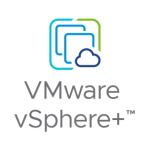Last week, I posted a high level overview of what VASA (vSphere Storage APIs for Storage Awareness) will do for making the management of a storage infrastructure that little bit easier for vSphere admins. I didn't really go into too much detail about individual capabilities in the previous blog post as a lot of our storage partners are still working on getting their respective implementations ready.
However, over the last couple of weeks, I reached out to a number of our storage partners to see if they would be willing to share some additional detail about their VASA implementation. Disclaimer#1 – Before going any further, I want to make it abundantly clear that VMware doesn't favour any one storage partner over another when it comes to VASA implementations. The partners listed in this post are here simply because I knew who to reach out to in those partner organizations for this info, and fortunately, they were prepared to share these details with us.
Lets now take a look at some of the implementations. To make the post easy follow, I asked the same questions of each partner. The responses are below:
DELL
Q1. Which array models will support VASA in this first release?
A1. All models of EqualLogic PS series arrays
Q2. How has DELL done the Vendor Provider Implementation (the glue that sits between the array & vCenter) For example, is it done in firmware, in management product or a stand-alone implementation?
A2. DELL has implemented the vendor provider in the EqualLogic vSphere Plugin which is part of Dell EqualLogic Host Integration Tools for VMware.
Q3. Which Storage Capabilities will be surfaced by VASA into vCenter?
A3. Storage Capabilities surfaced by VASA for datastores include identifying Homogeneous vs Mixed RAID type, snap space reserved, SSD drives and replication (Values – RAID, MIXED, SNAP, SSD and REPLICATED). VASA will also surface EqualLogic storage array events and alarms for critical events related to SpaceCapacity, Storage Capability and Storage Object (as defined by VASA developer guide). And of course VASA has EqualLogic integration for use with vSphere Storage DRS.
Here are some screen shots showing a capability being surfaced in vSphere vCenter from a DELL/EQL device. Note that datastores now have a new Storage Capabilities window. If you click on the 'bubble', the details/description are displayed too, as shown below:
EMC
Q1. Which array models will support VASA in this first release?
A1. EMC's first implementation will support VMAX, DMX, VNX, CX4 & NS arrays using block protocols. Support for NAS devices, VNXe arrays & Isilon will follow soon afterwards.
Q2. How has EMC done the Vendor Provider Implementation?
A2. EMC has implemented the Vendor Provider it via Solutions Enabler. Solutions Enabler is available as an installable binary for EMC customers from the Powerlink site, and also as a virtual appliance in the VMware Virtual Appliance store.
Q3. Which Storage Capabilities will be surfaced by VASA into vCenter?
A3. Unfortunately, no details were available on actual capabilities that EMC will surface from their provider, nor were there any screen shots available at the time of going to press. We might come back to this again in a future post.
NetApp
Q1. Which array models will support VASA in this first release?
A1. All NetApp FAS storage systems that are capable of running Data ONTAP version 7.3.3 or later will be supported.
Q2. How has NetApp done the Vendor Provider Implementation?
A2. NetApp’s VASA Vendor Provider is a standalone software “application” with a 64-bit Windows (only) installer that can be installed on either a physical or virtual machine. It communicates with NetApp storage systems via NetApp ZAPIs and requires no license and will be a free download from NetApp’s NOW software download site.
Q3. Which Storage Capabilities will be surfaced by VASA into vCenter?
A3. NetApp's VASA Provider creates a concatenated string of the storage attributes as applicable for each volume/LUN. The storage attributes are Disk Type (SSD, SATA, SAS, FC) – Represents a underlying disk used by NetApp storage, Dedupe – Indicates space efficiency on the underlying NetApp LUN or a volume & Replication – Indicates that the underlying NetApp storage is configured for SnapMirror or SnapVault.
Note that actual storage capabilities strings could be combination of storage attributes mentioned above. Whenever storage capability contains more than one storage attributes, the attributes are ordered in ascending order of storage attribute name.
Here are some screen shots showing a capability being surfaced in vSphere vCenter from a NetApp device:
HP
Q1. Which array models will support VASA in this first release?
All HP Storage arrays will support VASA. This includes the 3PAR, P4000, EVA, P6000, P9500, XP20000/24000 and P2000.
Q2. How has HP done the Vendor Provider Implementation?
The VASA providers for HP storage arrays are packaged with HP's vSphere management plug-in’s which include the Insight Control Storage Module for vCenter Server and HP 3PAR Recovery Manager for VMware Software Suite. The VASA providers are free of charge and can be downloaded and installed from HP's website without any additional license.
Q3. Which Storage Capabilities will be surfaced by VASA into vCenter?
The specific storage capabilities that HP arrays provide to vCenter Server are Drive Type – DriveType_FC, DriveType_NL, DriveType_SSD, DriveType_Mixed, RAID Type – RAID0, RAID1, RAID5, RAID6, Provisioning Type – ThinProvisioned, FullyProvisioned, VV Type – VirtualCopy, PhysicalCopy, Base & Remotecopy – InRemotecopy, NotInRemotecopy.
Conclusion
As you can see, this blog is only displaying what some of our storage partners are doing with VASA, and I'm sure you will agree that this stuff is very cool indeed. I'd urge you to contact your own respective storage array vendor to get specific details about their VASA implementation. My understanding is that the partners will be creating their own landing pages for VASA, so this will be a great place to learn more.
Thanks again to my friends at DELL, EMC, NetApp & HP for providing me (and by extension, you) with early access to this information. Disclaimer#2 – This may not be what the end product looks like when these partners ship their VASA Vendor Provider. The storage capabilities may be added/removed/changed. There could be many changes made to their final implementation, so please don't use the information posted in this blog as definitive. Reach out to your storage partner for actual implementation details.
Get notification of these blogs postings and more VMware Storage information by following me on Twitter: VMwareStorage














